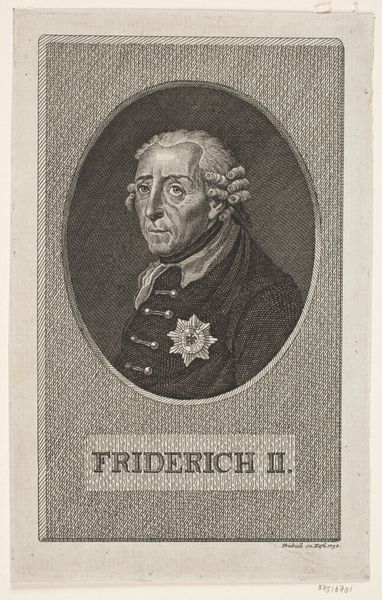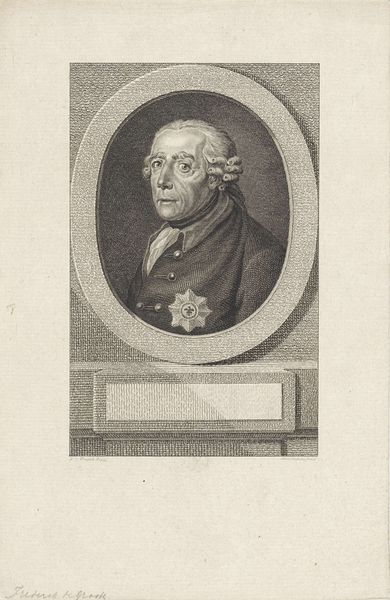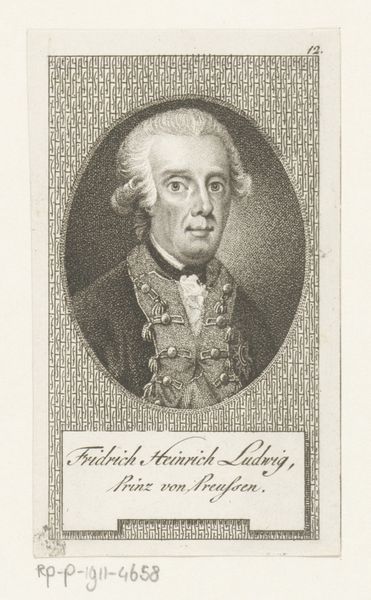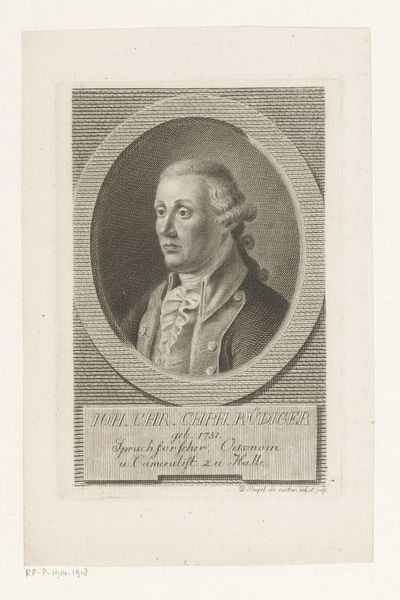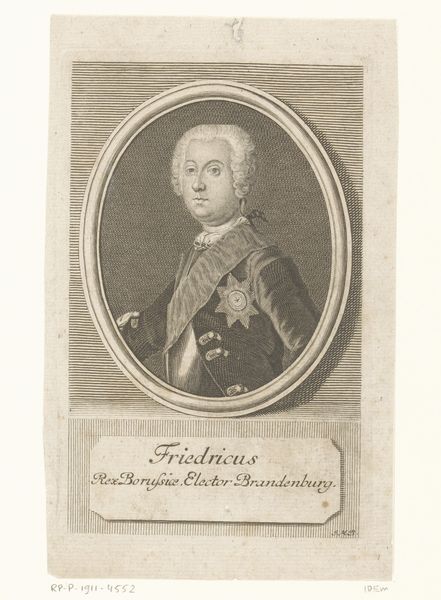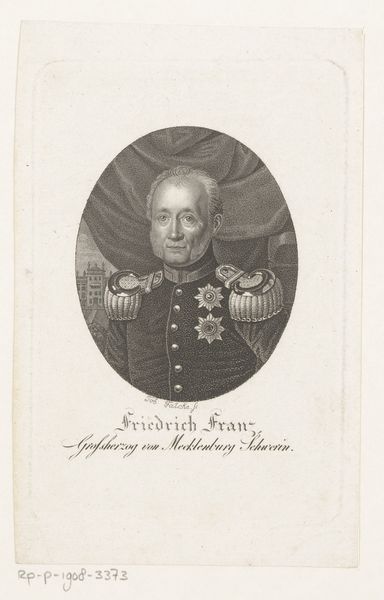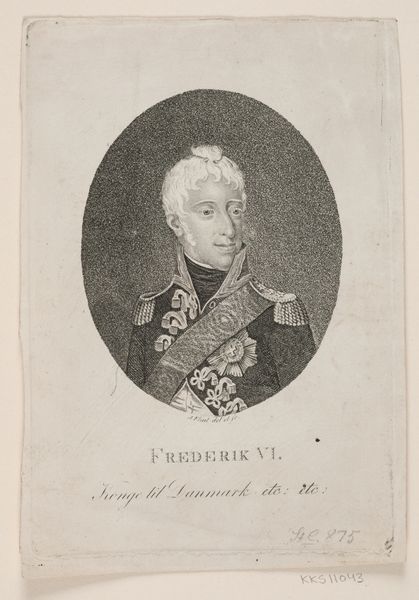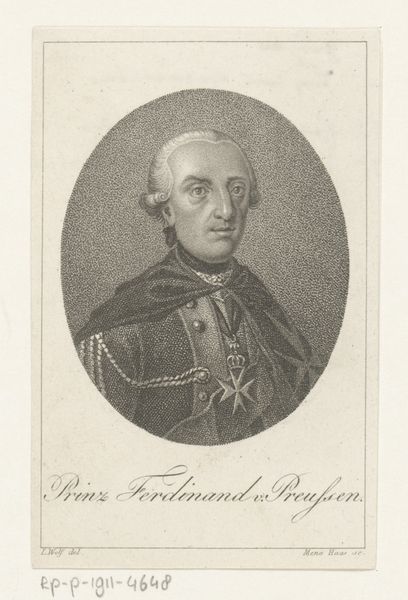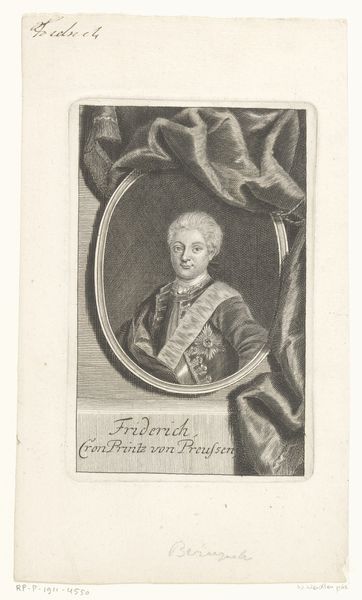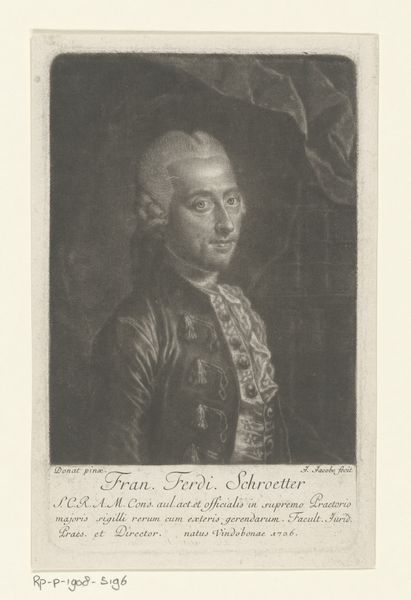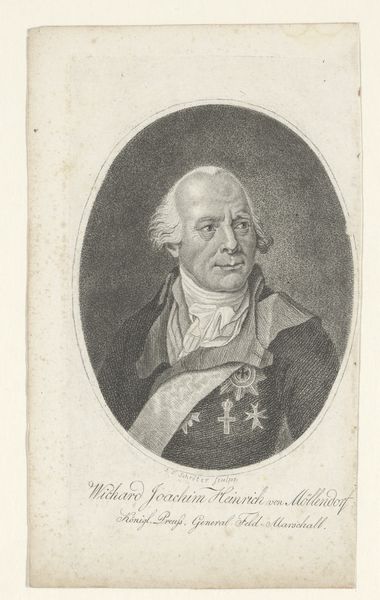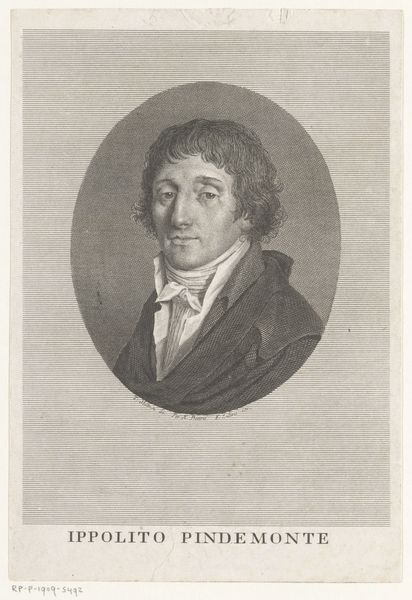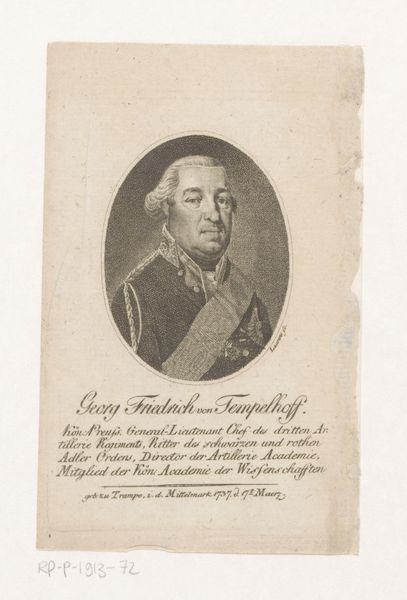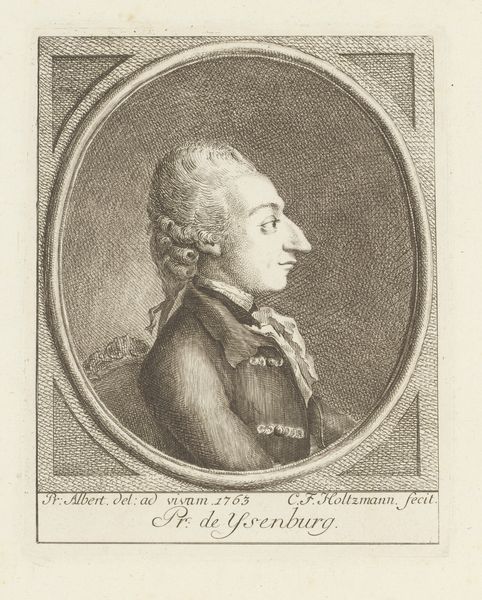
print, engraving
#
portrait
#
neoclacissism
# print
#
15_18th-century
#
history-painting
#
engraving
Dimensions: 171 mm (height) x 108 mm (width) (plademaal)
Editor: This print from 1790 by Johann Gottlieb Friedrich, entitled "Friedrich II af Preussen", feels incredibly formal and a bit severe. I mean, it’s a portrait, so I guess that’s to be expected. It looks to me as if he tried to capture not just a likeness, but also the essence of power. What do you see in this piece? Curator: The “essence of power,” as you say, is subtly communicated through symbols. Look at the details: the high collar, the precise wig, and especially the star on his chest. This is more than just a portrait; it's an icon. These are potent visual cues signaling authority, tradition and an established hierarchy. The symbol of the star speaks of chivalry, of honor, linking him to centuries of powerful leaders. Do you notice anything else that catches your eye? Editor: The way the image is framed? It feels almost like a coin or a medal. It’s like I'm looking at a symbol *of* a symbol now. Curator: Exactly! That oval frame emphasizes the idea of Friedrich as a figure enshrined in history, almost untouchable. It also invokes a sense of cultural memory: past leaders whose virtues need to be preserved through this sort of medium. And the severe look on his face suggests this wasn't always an easy mantle to bear. Editor: I didn’t realize so much could be conveyed through such a simple portrait. Curator: Images work precisely because of the subtle layers of meaning that accrete to them over time. Portraits are never just about capturing a likeness; they’re about constructing an image that resonates with cultural ideals. What does this portrait tell us about those ideals in 1790? How are they different today? These are questions that help us interpret the visual language of the past and what it continues to signify for us today.
Comments
No comments
Be the first to comment and join the conversation on the ultimate creative platform.
